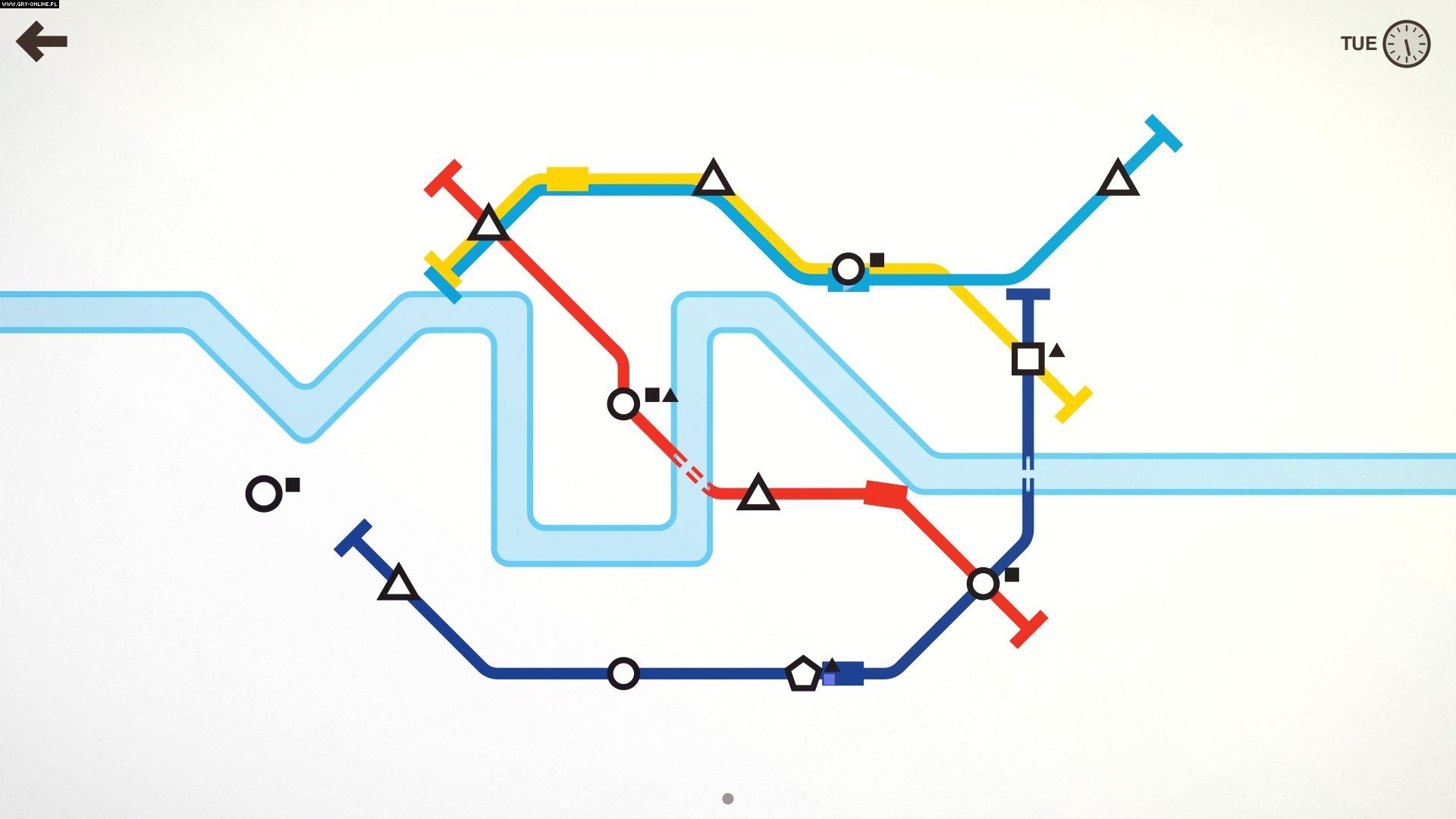

They were retrofitted into 19th century cities, but then the city grew around the metro network, so that the fit between development and transit is generally good."Īs an example, he cites the Paris Metro-an older system that grew into a grid pattern of intersecting lines as it extended outward. "The world's great metro systems weren't built that way. However, it's also an increasingly familiar problem in cities that have experienced explosive growth in the suburbs. circles without squares) is a big problem that will quickly overload your network, no matter what you do."Īccording to Walker, this poor land use is a worst-case scenario for transit planners, forcing them to either string together residential areas on a single line-and overload it-or build multiple lines into the same area, which gets expensive fast.

"A large area that's all residential with few jobs (e.g.

" Mini Metro imagines a city that is planned by someone else, or that grows haphazardly, where the transit system is totally reactive," Walker says. For example, so a hospital-bound passenger will appear at a residential stop at a reasonable time of day."īut far from merely deciphering the symbols, Walker pointed out that these randomly spawning stations follow little rhyme or reason-making the cities of Mini Metro a nightmare for a transit planner. "The only reason they ever correlated to specific destinations was to ease the creation of the passenger timetables. "He figured it all out," says Curry, adding that even though this was their original interpretation, the team now only refers to stations by shape.
#MINI METRO STRATEGY GUIDE SOFTWARE#
One expert even pointed out that the simple simulations of Mini Metro weren't far off from the software high-level experts use to analyze train patterns. Planners enjoyed seeing a video game portray their work, while the transit map community gloried in a system that let them sketch their own rail networks. "Having experts over what we'd made was understandably unsettling."īut while there were some corrections and feedback, the overall response was positive. "At first we were a bit nervous when it went through the transit planning community, because we'd done so little research," admits Curry. After sweeping through IndieCade, Steam Greenlight, and Early Access, Mini Metro released on Steam in November of 2015-and that's when the team began receiving long emails from public transit enthusiasts, designers, and academics. They formed a studio- Dinosaur Polo Club-and hired a small team to work at their home base in Wellington, New Zealand.
#MINI METRO STRATEGY GUIDE UPGRADE#
The game was enough of a hit that the brothers decided to stick with the formula and upgrade the game to a full experience. "He'd found it surprisingly satisfying, so perhaps we could make a game with the tube map?" The best way to deal with this is to break the cycle by adding a station from a different type inbetween, for example a triangle."That led Robert to think about planning trips on the London Underground," says Curry. Try to avoid having two or more stations in a row because when a train is full when emptying the first station, it will go past the second one as it has no place to drop its passengers. Passengers can be unloaded at any same-shaped station, keep that in mind when creating your railways.

You can drag your extra trains between rails, so watch for crowded stations and adjust accordingly. They can have a significant impact as more stations appear. Think about how you place your early rails thoroughly. Make rarer shapes (squares, pluses etc.) interchanges or have them close to interchanges. Have a variety of shapes on each main line (with at least one square, triangle and circle) but also minimise distance travelled. If things get tight, you can always move one train to the collapsing station (it finishes the stop at the next station and then respawns where you placed it).Ĭonnect rare symbols to at least 2 lines. Get tunnels whenever possible, otherwise go for carriages.


 0 kommentar(er)
0 kommentar(er)
